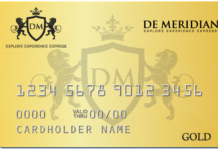Cryotherapy is a popular treatment that uses extreme cold (like liquid nitrogen) to freeze and remove unwanted skin growths, such as warts, skin tags, or even early-stage skin cancers.
If you’ve recently had cryotherapy or are considering it, understanding the speed-up Cryotherapy Healing Process and its stages can help you take better care of your skin and know what to expect.
In this guide, we’ll break down the cryotherapy healing process in simple terms, including what happens right after treatment, how long recovery takes, and tips for faster healing in 2025.
What Happens During Cryotherapy?
Before diving into healing, let’s quickly recap how cryotherapy works:
- A doctor applies liquid nitrogen (at -321°F!) to freeze the abnormal skin cells.
- The freezing destroys the targeted tissue, which then goes through natural healing stages.
- The process is quick, minimally invasive, and usually doesn’t require anaesthesia.
Now, let’s explore the healing stages step by step.
Stage 1: Immediate Reaction (First Few Hours)
Right after cryotherapy, your skin will react to the extreme cold.
Here’s what happens:
- Redness & Swelling – The treated area turns red and may feel tender, similar to a mild sunburn.
- Possible Blister Formation – Within 24 hours, a blister (clear or blood-filled) may form, which is a normal part of healing.
- Stinging Sensation – Some people feel mild pain or itching, but this usually fades within hours.
What to Do:
✔ Avoid touching or popping the blister (this can cause infection).
✔ Keep the area clean with mild soap and water.
Stage 2: Blister & Scabbing (Days 2–7)
Over the next few days, the blister may burst or dry up, forming a scab.
- Blister Dries Up – The fluid inside may drain naturally, or the blister may flatten.
- Scab Forms – A crusty layer develops, protecting the new skin underneath.
- Mild Itching – This is normal, but avoid scratching to prevent scarring.
What to Do:
✔ Apply petroleum jelly (Vaseline® or Aquaphor®) to keep the area moist.
✔ Cover with a bandage if there’s oozing (but let it breathe when possible).
✔ Avoid scented lotions or makeup until fully healed.
Stage 3: Scab Falls Off (1–3 Weeks)
The final healing stage involves the scab naturally peeling away.
- New Skin Revealed – The scab falls off, leaving fresh pink skin underneath.
- Possible Discoloration – The area may look lighter or darker temporarily (can last months).
- Minimal Scarring – Cryotherapy usually leaves little to no scarring if cared for properly.
What to Do:
✔ Use sunscreen (SPF 30+) to protect the new skin from sun damage.
✔ Avoid picking at the scab—let it fall off naturally.
How Long Does Full Healing Take?
- Small lesions (warts, skin tags): 1–2 weeks.
- Larger or deeper lesions: Up to 3 weeks.
- Skin color normalization: Can take months (rarely permanent).
How Much Does Cryotherapy Cost in 2025?
Cryotherapy pricing depends on the type of treatment and location.
Here’s the latest breakdown:
| Type of Cryotherapy | Average Cost (2025) | Session Length |
| Whole-Body Cryotherapy (WBC) | $50 – $100 | 2-4 minutes |
| Localized Cryotherapy (for injuries, pain) | $25 – $50 | 10-20 minutes |
| Cryotherapy for Skin Lesions (warts, tags) | $100 – $500 | Varies |
| Cryo Facial | $50 – $300 | 10-30 minutes |
| CryoSlimming (Fat Freezing) | $250 – $450 | 30-45 minutes |
Ways to Save Money:
✔ First-time discounts (often $25-$50 for initial sessions).
✔ Membership plans ($200-$500/month for unlimited sessions).
✔ Package deals (buying multiple sessions at once reduces cost).
Note: Insurance rarely covers cryotherapy unless medically necessary (e.g., for cancer or skin lesions
10 Proven Ways to Speed Up Cryotherapy Healing
Cryotherapy is a quick and effective treatment, but proper aftercare is key to faster healing. Whether you’ve had cryotherapy for skin issues, pain relief, or muscle recovery, these 15 simple tips will help you heal faster and avoid complications.
1. Keep the Area Clean (But Don’t Overwash)
After cryotherapy, the treated area needs to stay clean to prevent infection. However, washing too much can slow healing.
- Use lukewarm water and a gentle, fragrance-free soap.
- Pat dry with a soft towel—don’t rub.
- Wash once or twice a day—more than that can dry out the skin.
Why it works: Keeping the area clean removes bacteria but avoids irritation.
2. Moisturize with Petroleum Jelly
Dry skin slows healing. Petroleum jelly (like Vaseline or Aquaphor) keeps the area moist and prevents scabs from cracking.
- Apply a thin layer 2-3 times a day.
- Use clean hands or a cotton swab to avoid germs.
- Avoid scented lotions—they can irritate the skin.
Why it works: Moist skin heals faster than dry, cracked skin.
3. Avoid Sun Exposure
New skin after cryotherapy is extra sensitive to sunlight. Sunburn can cause dark spots and slow healing.
- Stay in the shade for at least 2 weeks.
- Wear sunscreen (SPF 30+) if you go outside.
- Cover the area with clothing if possible.
Why it works: Sun damage makes healing take longer and can cause scars.
4. Don’t Pop Blisters
Some people get small blisters after cryotherapy. Popping them increases infection risk.
- Leave them alone—they’ll dry up on their own.
- Cover with a bandage if they burst accidentally.
- See a doctor if blisters look infected (red, swollen, or leaking pus).
Why it works: Blisters protect new skin underneath—popping them slows healing.
5. Stay Hydrated
Water helps your body heal faster by flushing out toxins and keeping skin healthy.
- Drink at least 8 glasses of water a day.
- Avoid too much coffee or alcohol—they dehydrate you.
Why it works: Hydration improves blood flow, which speeds up healing.
6. Eat Healing Foods
Certain foods help your body repair skin and tissue faster.
- Protein (chicken, fish, beans) – builds new skin.
- Vitamin C (oranges, strawberries) – fights infection.
- Zinc (nuts, seeds) – speeds wound healing.
Why it works: Good nutrition gives your body the tools it needs to heal.
7. Skip Makeup & Scented Products
Makeup and perfumed lotions can irritate healing skin.
- Wait at least 7-10 days before using makeup on the area.
- Choose fragrance-free products if needed.
Why it works: Chemicals in makeup can cause redness and slow recovery.
8. Use a Cold Compress (If Swollen)
If the area is swollen or sore, a cold compress can help.
- Wrap ice in a cloth (don’t apply directly).
- Press gently for 10 minutes (repeat every few hours).
Why it works: Reduces swelling and numbs pain.
9. Rest & Avoid Heavy Exercise
Too much movement can irritate the treated area.
- Avoid intense workouts for 1-2 days.
- Light walking is okay—just don’t overdo it.
Why it works: Rest lets your body focus on healing.
10. Wear Loose Clothing
Tight clothes can rub against healing skin and cause irritation.
- Choose soft, breathable fabrics (like cotton).
- Avoid tight bands or straps over the area.
Why it works: Less friction = faster healing.
Final Thoughts
Cryotherapy is a safe, effective treatment, but proper aftercare makes a huge difference in healing speed. Follow these 2025-updated tips, and your skin or muscles will recover faster with minimal scarring.
Want to try cryotherapy? Look for certified clinics near you and ask about introductory discounts to save money!












